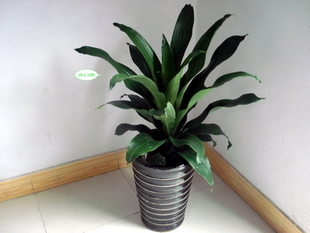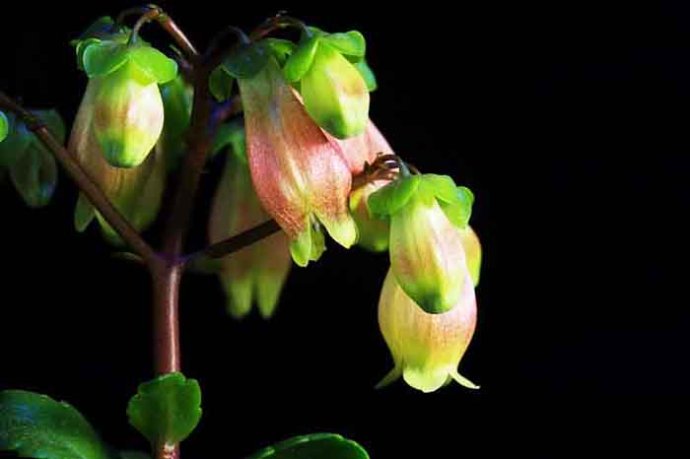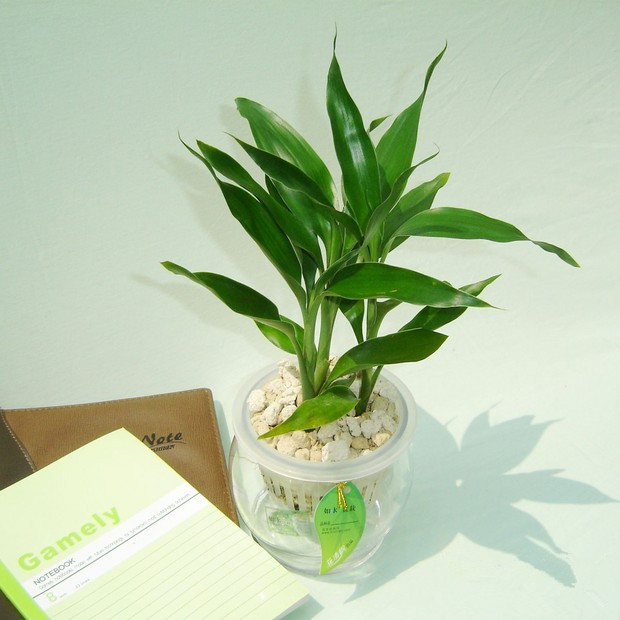The difference between Yemeni Iron and Brazilian Iron Culture methods and precautions of Yemeni Iron
It is a feast for the eyes to plant a few green plants indoors. Yimen iron, the Latin name is Draceana arborea, belongs to the Liliaceae, dragon blood tree plants. The cultivation medium of this plant is fertile loam or rotten soil with good drainage. 50% shading is the best light, and strong light is avoided. Indoor cultivation should be placed in a place with plenty of light, the lack of light will make the leaves fade, the leaves are slender and wavy with the edge of the leaves. Organic fertilizer, such as rotten peanut bran or human feces and urine, can be used as stable fertilizer, and combined with three-element foliar fertilizer 3 or 4 times a month. Sex likes high temperature and humidity, and the suitable growth temperature is 20 ℃ 30 ℃. In winter, cold prevention measures should be taken to prevent the leaves from withering and drying. Pay attention to good ventilation and keep the air relative humidity above 80%. Next, the editor of the network will introduce the iron gate.

The difference between Yemeni Iron and Brazilian Iron Culture methods and precautions of Yemeni Iron
Intuitive differences:
The leaves of ① Brazil wood are soft, the leaf ends droop obviously and are arch-shaped.
② Yemeni iron leaves are hard, leaf tip drooping is not obvious, oblique extension shape.
In addition, Yemeni iron leaves are slightly longer than Brazilian wood leaves!
1. Yemeni iron like warm, humid, well-ventilated environment, the appropriate temperature for growth is 20-30 ℃, winter less than 10 ℃ or so there are adverse reactions; like semi-overcast is also resistant to shade, but in the long-term shade maintenance is not conducive to plant health, it is best to put in bright light with scattered light, summer to avoid direct light, so as to avoid sunburn leaves, leaf yellowing or whitening phenomenon.
two。 The cultivation of Yimen iron needs fertilization combined with watering, generally using water-soluble fertilizer or rotten cake fertilizer, which can be supplemented every time during the peak growth period, but do not add fertilizer or less fertilizer when watering slowly.
3. When Yemeni iron grows too high, the lower leaves are left with only stems, so they can be cut short according to the viewing angle, and the upper branches after pruning can be cut in river sand or vermiculite to form a new plant.
Causes of yellowing of iron leaf tips in Yemen
1. Yemeni iron prefers warm, humid and well-ventilated environment, and the suitable temperature for growth is 20-30 ℃. Adverse reactions occur when the temperature is less than 10 ℃ in winter. At this time, we should pay attention to cold prevention measures to prevent cold damage and dry leaves.
two。 Long-term shade maintenance is not conducive to plant health, lack of light will make leaves fade, leaves slender and leaf edge wavy. It is best to put it in a place where the light is bright and scattered.
3. Usually to keep the leaf surface clean, do not let too much dust stay on the leaf surface, that is, not beautiful, but also easy to produce diseases.
The difference between Yemeni Iron and Brazilian Iron
Brazilian Iron:
Tequila (Agavaceae) dragon blood tree is a small evergreen tree, plant height up to 6 meters, flowering in early spring, leaves gather stem tip. Leaves narrowly long elliptic, long 40~90cm, wide 5~10cm, leathery. The flowers are yellowish and fragrant. Originally from Africa, Guinea and Algeria. It is a beautiful indoor foliage plant. There are some cultivated varieties, such as' Massangeana''(the leaves have a wide green edge, yellow broadband in the center, the new leaves are more obvious), 'Victoria'' (the leaves are mostly golden yellow with yellow-green stripes in the middle), and 'Lindenii'' with yellow-green leaves.
(Brazilian Railway)
Yemen Iron:
Agavaceae is a small evergreen tree with a height of about 2 meters. The leaves are broad striped, dark green, sessile and glossy green. Umbels with small yellowish green flowers. The florescence is from June to August.
(Yemen Iron)
Leaf difference (intuitive difference)
The main results are as follows: 1. The blade of Brazilian iron is soft, the leaf tip is sagging obviously, and the arch is sagging.
2. The leaf of Yemeni iron is hard, the leaf tip is not sagging obviously, and the leaf is obliquely extended.
3. Brazilian iron on the market is mostly horticulture, gold heart or Phnom Penh.
4. Yemeni iron leaves are slightly longer than Brazilian iron leaves (different plants, different periods).
The difference between Yemeni Iron and Brazilian Iron (figure)
Yemeni iron and Brazilian iron are common foliage plants, and the difference between Yemeni iron and Brazilian iron is not easy to tell, but if the two plants are put together, there are differences to be found. let's see what the differences are.
The difference between Yemeni Iron and Brazilian Iron (Resources)
Brazilian iron: tequila (Agavaceae) dragon blood tree is a small evergreen tree, up to 6 meters high, flowering in early spring, leaves gather stem tip. Leaves narrowly long elliptic, long 40~90cm, wide 5~10cm, leathery. The flowers are yellowish and fragrant. Originally from Africa, Guinea and Algeria. It is a beautiful indoor foliage plant. There are some cultivated varieties, such as' Massangeana''(the leaves have a wide green edge, yellow broadband in the center, the new leaves are more obvious), 'Victoria'' (the leaves are mostly golden yellow with yellow-green stripes in the middle), and 'Lindenii'' with yellow-green leaves.
Yemeni iron: Agavaceae is a small evergreen tree with a height of about 2 meters. The leaves are broad striped, dark green, sessile and glossy green. Umbels with small yellowish green flowers. The florescence is from June to August.
The difference between Yemeni Iron and Brazilian Iron (intuitive difference):
The main results are as follows: 1. The blade of Brazilian iron is soft, the leaf tip is sagging obviously, and the arch is sagging.
2. The leaf of Yemeni iron is hard, the leaf tip is not sagging obviously, and the leaf is obliquely extended.
3. Brazilian iron on the market is mostly horticulture, gold heart or Phnom Penh.
4. Yemeni iron leaves are slightly longer than Brazilian iron leaves (different plants, different periods).
- Prev

Culture methods and matters needing attention of longevity flowers in palace lanterns
Palace lantern longevity flower, hear his name feel so noble, like a royal thing. Perennial succulent herbs, stems lignified, much branched, new branches soft and often pendulous, leaves opposite, long ovate, slightly fleshy, flowers reddish, tubular. The longevity flower of the palace lantern is a genus of crassulaceae, also known as red lantern, trailing hanging bell begonia.
- Next

How to raise rich bamboo leaves yellowing by water?
Phyllostachys pubescens originated in the Canary Islands and tropical regions of Africa and Asia, and is now widely introduced and cultivated in China. Its sex likes the high temperature and high humidity environment, the request to the light is not strict, like the light also can bear the shade. It is suitable for growing in sandy loam with good drainage. The suitable temperature for growth is 20 ℃ and 30 ℃, and the overwintering temperature is 10 min. Rich bamboo
Related
- Fuxing push coffee new agricultural production and marketing class: lack of small-scale processing plants
- Jujube rice field leisure farm deep ploughing Yilan for five years to create a space for organic food and play
- Nongyu Farm-A trial of organic papaya for brave women with advanced technology
- Four points for attention in the prevention and control of diseases and insect pests of edible fungi
- How to add nutrient solution to Edible Fungi
- Is there any good way to control edible fungus mites?
- Open Inoculation Technology of Edible Fungi
- Is there any clever way to use fertilizer for edible fungus in winter?
- What agents are used to kill the pathogens of edible fungi in the mushroom shed?
- Rapid drying of Edible Fungi

